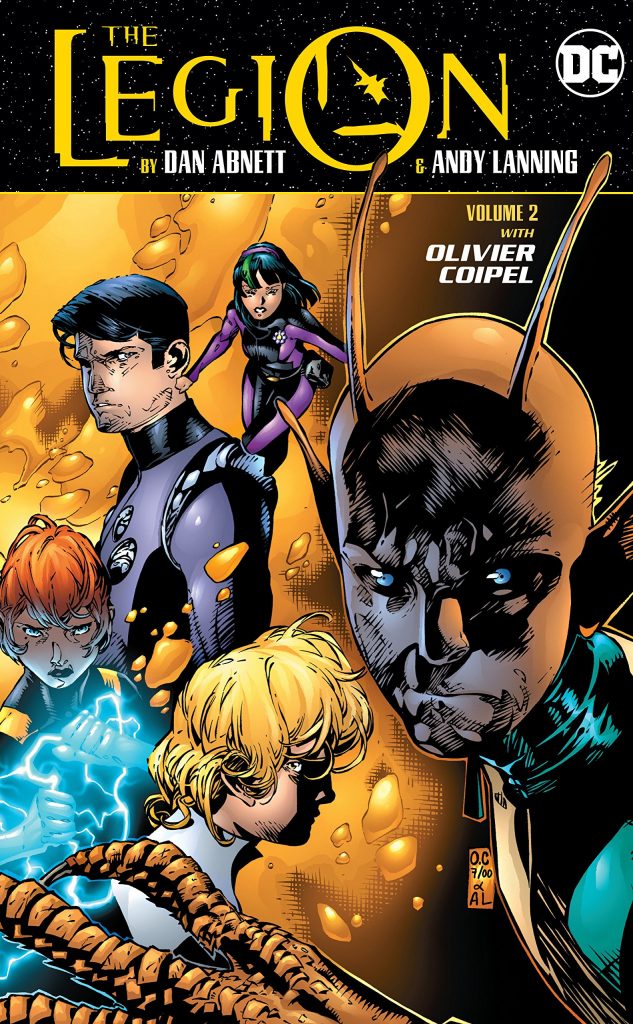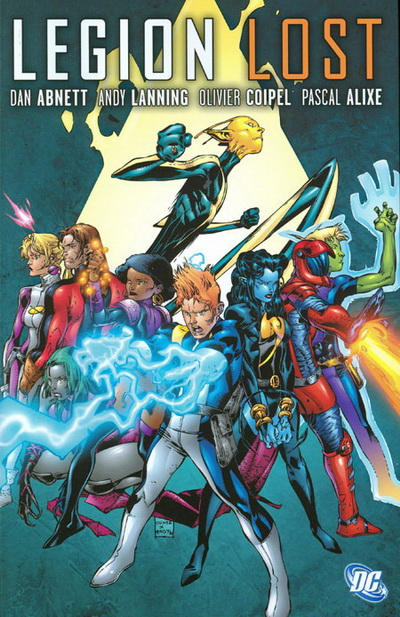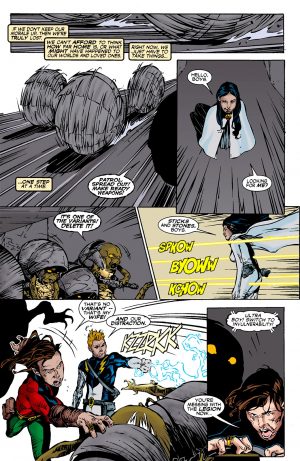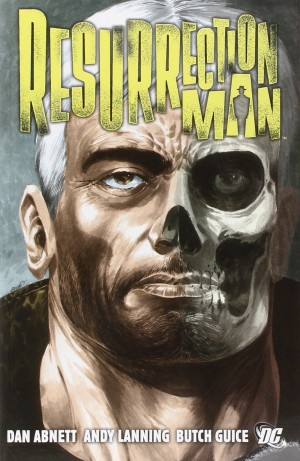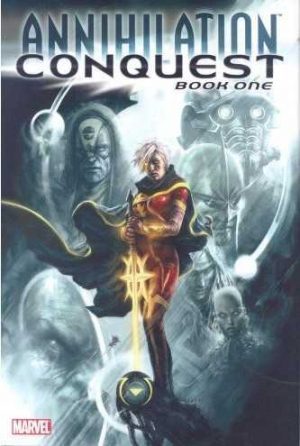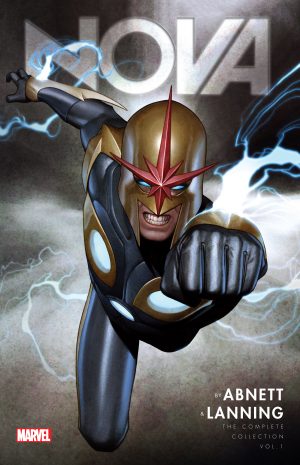Review by Ian Keogh
By 2000 the Legion of Super-Heroes franchise had completely lost its way and was turned over to the writing team of Dan Abnett and Andy Lanning and artist Olivier Coipel, who made some drastic changes in approach as seen in Volume 1. They subsequently decided to have a few Legion members cast adrift from their 30th century familiarity as Legion Lost, under which title these twelve chapters were first collected in 2011. Trapped in an outpost, they’re catapulted somewhere unknown to all their direction-finding and location tools. One of their members has placed the remaining Legionnaires in stasis until awoken by a hunted refugee name Shikari.
Restricting their cast to a compact nine Legion members from all those available reduces them to a manageable core, and transporting them somewhere unknown, possibly beyond the mapped universe, opens new possibilities. Abnett and Lanning have some Legion technology work, like their universal translators and communicators, but flight rings are inactive, a fundamental limitation to the Legion. The introduction of Shikari provides an alternative encyclopedia to the politics and beings of their new vicinity, and she adds to the power dynamic by being an instinctive tracker. The Legionnaires take turns to narrate successive chapters as they search for a way home.
Coipel’s brief seems to have been to alter the look of the Legion as drastically as the writers changed the status quo, but it’s not as successful. In Volume 1 he moved away from the clear, glossy visuals common to earlier incarnations, but here Coipel reduces the cast to lumpy people or scratchy, angular forms, with lines on faces making it seem as if the women as well as the men have five o’clock shadow. There’s also an abstraction to the enemies the Legion face, and the layouts are messy, a deliberate disorientation reflecting the Legion’s circumstances, but a messy look is a messy look. It’s mimicked by Pascal Alixe for the chapters he draws.
Much of the first half is ordinary. The Blight from the previous volume is referred to, and hinted at as possibly being responsible for fractious personalities above and beyond what circumstances would cause, which are slowly tearing the team apart. However, the desolation and strangeness is required to build up to the second half, which is an entirely different proposition. It has an intensity built on character dynamics and several great plot bombs and near the end a still surprising use of someone who’s completely changed. Unfortunately, though, Coipel (and Alixe) don’t change the art when the status quo shifts, and the art never sells the exciting story. There is also a caveat that plenty of Legion fans won’t like the biggest surprise.
As there’s not been a third volume of The Legion by Dan Abnett and Andy Lanning, anyone wanting to find out what happens next is directed to Legion Worlds. A cover is widely seen online, but it seems the collection was never actually issued, so it only remains available as a series of six individual comics.
